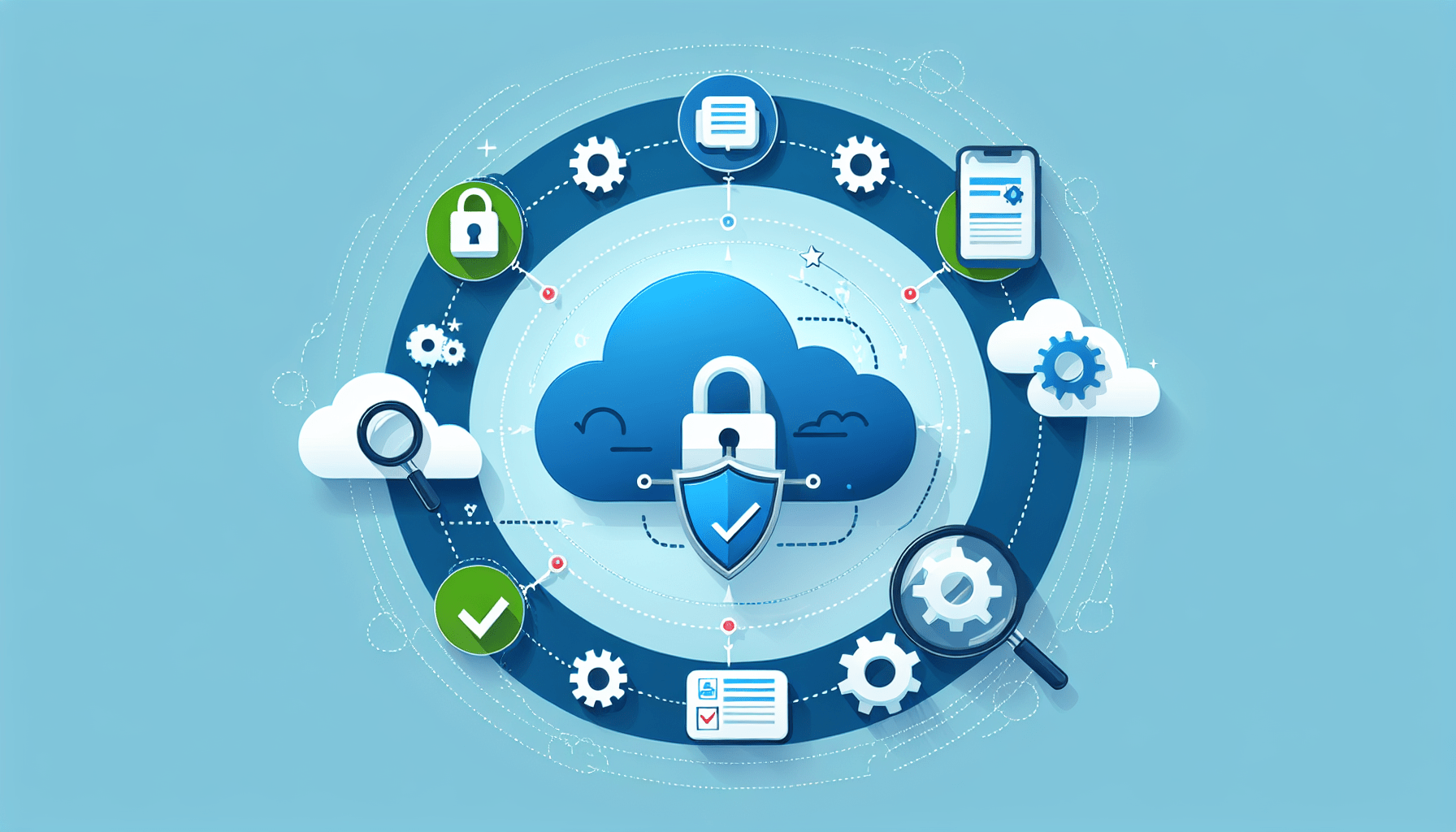When it comes to ensuring the security of your cloud infrastructure, choosing the right assessment tools is paramount. With a multitude of options available in the market, it can be overwhelming to find the perfect fit for your organization. In this article, we will provide you with essential guidelines to help you navigate through the selection process and choose the most suitable cloud security assessment tools that align with your specific requirements. From evaluating the tool’s features and functionality to considering its compatibility with your existing infrastructure, you will gain invaluable insights to make an informed decision and enhance the security of your cloud environment.

Understanding Cloud Security Assessment Tools
Definition of cloud security assessment tools
Cloud security assessment tools are software applications designed to evaluate and analyze the security of cloud computing environments. These tools help organizations assess and identify potential vulnerabilities, threats, and risks associated with their cloud infrastructure, data, and applications. They provide crucial insights into the security posture of a cloud environment and enable organizations to make informed decisions to strengthen their security measures.
Importance of using cloud security assessment tools
Using cloud security assessment tools is vital for organizations to ensure the security and integrity of their cloud-based assets. Cloud environments are susceptible to various security threats such as data breaches, unauthorized access, and service disruptions. By employing these tools, organizations can proactively identify and address security gaps, reduce the risk of incidents, and enhance overall security posture. Moreover, compliance regulations and industry standards often require organizations to regularly assess and validate their cloud security measures.
Common features of cloud security assessment tools
Cloud security assessment tools typically offer a range of features to assist organizations in evaluating and monitoring their cloud security. Some common features include:
- Vulnerability scanning: Tools perform scans and identify potential vulnerabilities in the cloud infrastructure, including misconfigurations, outdated software, and weak access controls.
- Threat detection and monitoring: These tools continuously monitor the cloud environment for suspicious activities, detect potential threats, and generate real-time alerts for prompt action.
- Compliance and regulatory adherence: They help organizations ensure compliance with relevant standards and regulations by evaluating whether security controls meet the required criteria.
- Risk assessment and prioritization: Tools assess the severity and impact of identified vulnerabilities and threats, allowing organizations to prioritize their remediation efforts.
- Reporting and analytics: Tools generate comprehensive reports and provide actionable insights into the security status of the cloud environment, facilitating informed decision-making and audit trails.
Identifying Your Cloud Security Needs
Assessing your organization’s cloud security requirements
Before selecting a cloud security assessment tool, it is crucial to assess your organization’s specific security requirements. This assessment involves identifying the critical assets, data, and applications that reside in the cloud, as well as understanding the potential risks and security objectives. Consider factors such as the level of sensitivity of your data, regulatory compliance requirements, and the overall risk appetite of your organization.
Determining the types of data and applications you need to protect
Different types of data and applications have varying security requirements. Assessing the nature and sensitivity of your organization’s data and applications is essential to determine the appropriate security controls and the level of protection needed. For example, customer personal information may require stronger encryption and access controls compared to less sensitive information.
Considering compliance and regulatory requirements
Many organizations operate in industries that have specific compliance and regulatory requirements. It is important to consider these requirements when selecting a cloud security assessment tool. Ensure that the chosen tool supports the necessary compliance standards and can assist in meeting your obligations. Examples of common compliance standards include HIPAA (Health Insurance Portability and Accountability Act), PCI DSS (Payment Card Industry Data Security Standard), and GDPR (General Data Protection Regulation).
Evaluating Security Capabilities
Assessing the tools’ ability to detect and mitigate security threats
One of the primary functions of cloud security assessment tools is to detect and mitigate security threats. When evaluating these tools, consider their ability to detect various types of threats, such as malware, unauthorized access attempts, and data breaches. Look for features like intrusion detection and prevention systems, anomaly detection, and behavior analysis that enhance threat detection capabilities. Additionally, assess the tools’ ability to respond to threats promptly by providing automated or manual mitigation actions.
Evaluating the tools’ ability to identify vulnerabilities
Cloud security assessment tools should also be capable of identifying vulnerabilities in the cloud infrastructure and applications. Look for tools that offer comprehensive vulnerability scanning and assessment capabilities. These tools should assess the configuration of the cloud environment, identify weaknesses in access controls, identify outdated software versions, and help prioritize vulnerability remediation efforts.
Assessing the tools’ ability to provide real-time monitoring and alerts
Cloud security threats can emerge at any time, making real-time monitoring and alerts crucial for timely incident response. Ensure that the cloud security assessment tools provide real-time monitoring capabilities and generate alerts for critical security events. Look for features such as log analysis, anomaly detection, and automated alerts that notify IT and security teams of potential security incidents promptly.
Considerations for Cloud Environment
Compatibility with your cloud service provider
When selecting a cloud security assessment tool, it is essential to ensure compatibility with your chosen cloud service provider (CSP). Different CSPs may have specific requirements or limitations for security assessment tools. Review the CSP’s security guidelines and documentation to ensure that the selected tool aligns with their recommended practices and integrates seamlessly with their services.
Scalability and flexibility of the tools
Cloud environments are dynamic and can scale rapidly. As such, it is crucial to select cloud security assessment tools that can scale with your organization’s growth and expanding cloud infrastructure. Consider how the tools handle large-scale cloud deployments and evaluate their ability to adapt to changing cloud environments. Look for features like auto-discovery, auto-scaling, and distributed architecture that enable seamless scalability and flexible deployment options.
Integration with existing cloud security solutions
Evaluate the compatibility and integration capabilities of the cloud security assessment tool with your existing security solutions. It is essential to ensure that the chosen tool can integrate with other security products, such as SIEM (Security Information and Event Management) systems and identity management solutions. Integration enables a cohesive security infrastructure that leverages collective insights and enhances overall protection.

Ease of Use and User Experience
User-friendly interface for easy navigation and operation
Cloud security assessment tools should have a user-friendly interface that enables easy navigation and operation. Look for tools that provide intuitive dashboards, clearly labeled menus, and well-organized workflows. A streamlined and intuitive interface enhances the efficiency of security teams, allowing them to quickly access the necessary information and perform their tasks effectively.
Availability of interactive dashboards and reports
Interactive dashboards and reports offer a comprehensive view of the cloud security posture and facilitate data-driven decision-making. When evaluating cloud security assessment tools, assess the availability of interactive dashboards that provide real-time updates on security metrics, threat trends, and vulnerability status. Additionally, look for tools that offer customizable reports that can be tailored to meet specific reporting requirements.
Ability to customize tool settings and configurations
Every organization has unique security requirements and preferences. Flexibility in tool settings and configurations is therefore crucial. Choose cloud security assessment tools that allow you to customize security policies, thresholds, and alerts based on your organization’s specific needs. The ability to configure notifications, filters, and scan schedules ensures that the tool aligns with your organization’s security protocols.
Vendor Reputation and Support
Researching the vendor’s reputation and track record
When choosing a cloud security assessment tool, it is essential to research and assess the vendor’s reputation and track record. Look for vendors with a proven track record in the industry and a strong presence in the cloud security space. Consider factors such as their experience, customer base, and partnerships. A reputable vendor is more likely to provide reliable and up-to-date security solutions.
Checking for customer reviews and testimonials
Gathering feedback from existing customers is valuable in evaluating the performance and reliability of cloud security assessment tools. Look for customer reviews and testimonials on the vendor’s website or independent review platforms. Positive reviews and testimonials indicate customer satisfaction and validate the effectiveness of the tool. Conversely, negative reviews or recurring issues may signify potential drawbacks or limitations.
Evaluating the quality and responsiveness of vendor support
Reliable support from the vendor is vital to address any issues or concerns that may arise during the adoption and use of the cloud security assessment tool. Assess the quality and responsiveness of the vendor’s support services by interacting with their support team or accessing their online resources. Prompt response times, knowledgeable support staff, and comprehensive documentation contribute to a positive user experience and efficient issue resolution.
Cost and Pricing Structure
Comparing the cost of different cloud security assessment tools
Cost is an important factor when selecting a cloud security assessment tool. Begin by evaluating the upfront cost or subscription fees associated with the tool. Compare the pricing structures of different vendors and consider the resources and budget available to your organization. Keep in mind that lower-priced tools may lack advanced features, while higher-priced tools may offer additional functionalities that may or may not be necessary for your specific needs.
Understanding the pricing structure: one-time fee, subscription, or usage-based
Different vendors may offer various pricing structures for their cloud security assessment tools. Some vendors charge a one-time fee for perpetual licenses, while others utilize a subscription-based model with monthly or annual fees. Additionally, certain tools may employ a usage-based pricing model, where costs are determined by the volume or frequency of assessments performed. Understanding the pricing structure is necessary to determine the long-term cost implications and align them with your organization’s budget.
Considering the value for money and ROI
When evaluating the cost of cloud security assessment tools, consider the value for money and return on investment (ROI) that these tools provide. Assess the potential benefits, such as improved security, reduced risk, and streamlined compliance efforts, against the associated costs. Evaluating the tool’s impact on operational efficiency, incident response time, and overall security effectiveness helps determine the ROI and make an informed decision.
Availability of Additional Features
Availability of threat intelligence and incident response capabilities
Advanced cloud security assessment tools may offer additional features such as threat intelligence feeds and incident response capabilities. These features provide organizations with up-to-date threat information and assist in effective incident response actions. Consider whether these features align with your organization’s incident response strategy and enhance your ability to proactively mitigate threats.
Support for compliance reporting and audit trails
Organizations with compliance requirements benefit from cloud security assessment tools that offer support for compliance reporting and audit trails. These tools generate reports that demonstrate compliance with specific regulations or standards and provide detailed audit trails that track security events and actions. This support simplifies compliance efforts and ensures adherence to industry regulations.
Integration with other security tools and platforms
Consider the compatibility and integration capabilities of the cloud security assessment tools with other security tools and platforms in your organization’s security infrastructure. Integration enhances the overall security effectiveness by consolidating security information, correlating data from different sources, and streamlining incident response. Evaluate whether the chosen tool supports integration with existing SIEM systems, threat intelligence platforms, or security orchestrators.
Considering Scalability and Future Growth
Assessing the tools’ ability to scale with your organization’s growth
Cloud environments are highly scalable, and organizations often experience rapid growth and expansion. It is crucial to assess the scalability of cloud security assessment tools to ensure that they can accommodate the increasing demand and complexity of the cloud infrastructure. Consider factors such as the number of cloud assets supported, the capability to handle large-scale assessments, and the ability to adapt to changing cloud architectures.
Evaluating the tools’ support for multi-cloud and hybrid cloud environments
Many organizations adopt multi-cloud or hybrid cloud strategies to optimize their infrastructure and leverage various cloud providers’ capabilities. When selecting a cloud security assessment tool, evaluate its compatibility with multi-cloud and hybrid cloud environments. Ensure that the tool supports different cloud platforms, can monitor and assess assets across multiple providers, and maintains consistent security policies and standards.
Considering future security needs and technology advancements
Cloud technology continues to evolve, and so do security threats and challenges. When choosing a cloud security assessment tool, consider its ability to address future security needs and keep up with emerging technologies. Evaluate the vendor’s commitment to research and development, their product roadmap, and their track record in adapting to evolving security threats. Choosing a tool with a forward-looking approach ensures long-term value and relevance.
Trial and Testing
Opting for free trials or demos to test the tools’ functionality
Before committing to a specific cloud security assessment tool, it is advisable to take advantage of free trials or demos offered by vendors. These trials allow you to assess the tool’s functionalities, user experience, and compatibility with your cloud environment. During the trial period, test critical features, perform vulnerability scans, and evaluate the tool’s compatibility with your existing infrastructure. This testing phase provides first-hand experience and ensures the tool meets your specific needs.
Engaging in proof-of-concept projects to assess effectiveness
For complex cloud environments or organizations with unique requirements, engaging in proof-of-concept (POC) projects can help assess the effectiveness of cloud security assessment tools in real-world scenarios. A POC involves deploying the tool in a controlled environment and evaluating its performance, accuracy, and impact on security posture. By conducting a POC, you can validate the capabilities of the tool and make an informed decision based on actual results.
Involving key stakeholders and subject matter experts in the evaluation
To ensure that the selected cloud security assessment tool aligns with the organization’s needs and objectives, involve key stakeholders and subject matter experts in the evaluation process. Consult with IT security teams, system administrators, compliance officers, and other relevant stakeholders to understand their requirements and gather diverse perspectives. This collaborative approach ensures that the chosen tool addresses the needs of various stakeholders and promotes organizational buy-in.
In conclusion, selecting the right cloud security assessment tool is crucial for organizations aiming to protect their cloud infrastructure, data, and applications. By understanding the definition and importance of these tools, assessing your organization’s security needs, evaluating security capabilities, considering cloud environment compatibility, focusing on user experience, vendor reputation, and support, understanding the cost and pricing structure, recognizing additional features, considering scalability and future growth, as well as undergoing trials and involving key stakeholders, organizations can make informed decisions and strengthen their cloud security posture.



